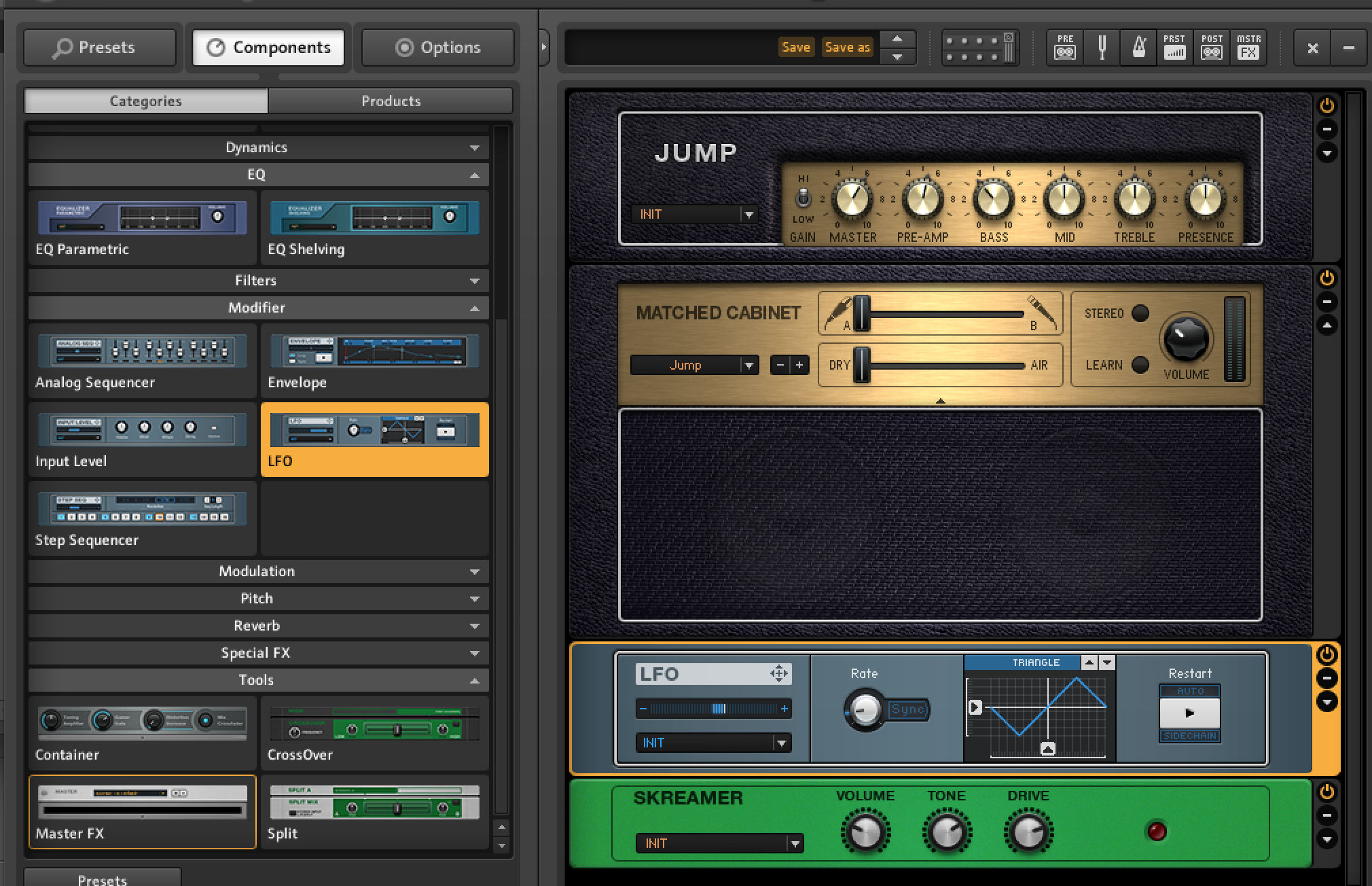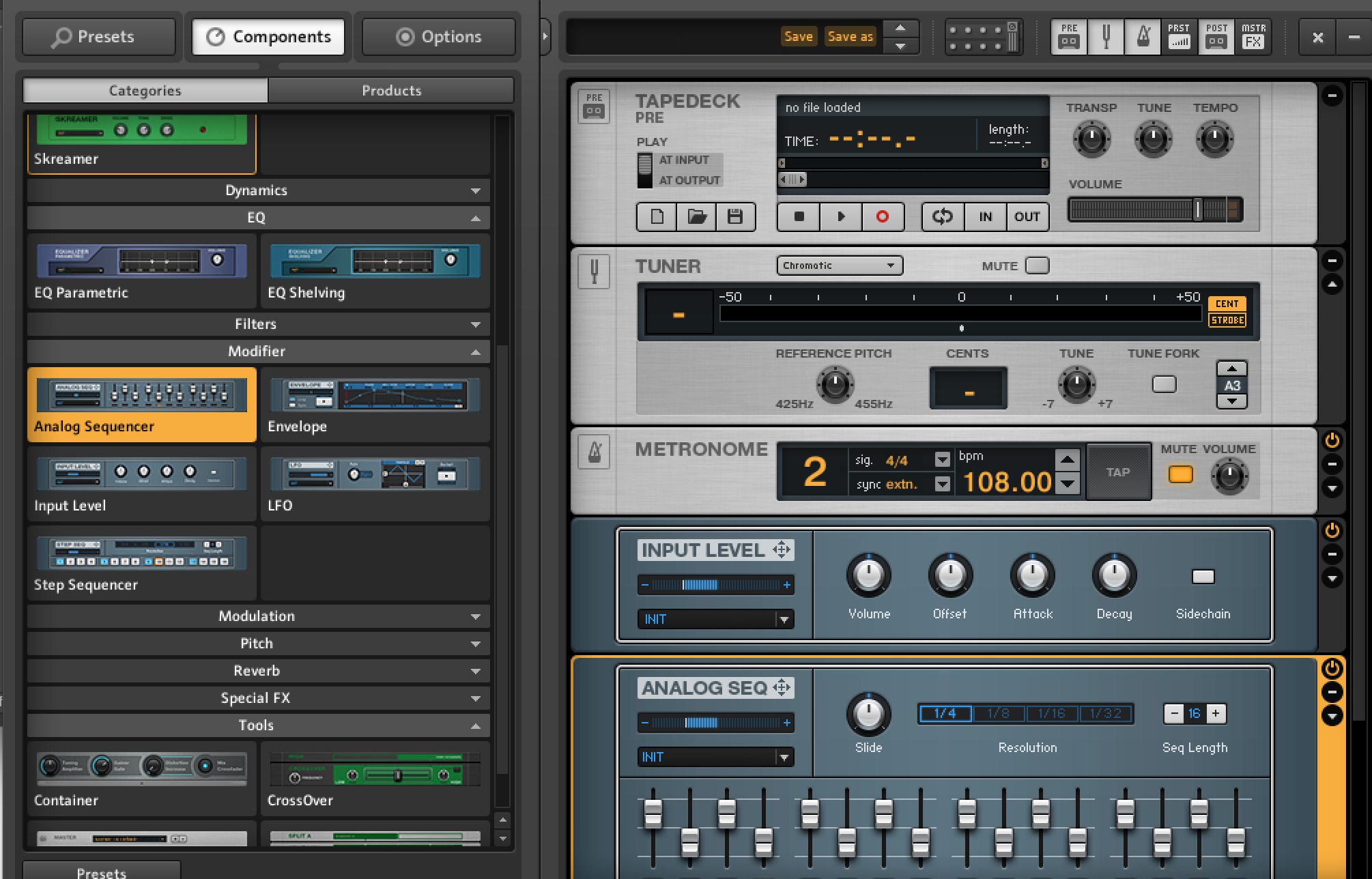
One issue we had with past editions of Guitar Rig is how difficult it could be to manage parameters across large racks with many components.
GUITAR RIG 6 PLAYER PRO
The new Matched Cabinet Pro offers IR-based room responses to the Matched Cabinet amp and cabinet combinations that Guitar Rig Pro users will already be used to too, granting a remarkable sense of room and amp interaction for smoothing sounds. This is one of many new bundled additions to the package. Though not ICM-based, you’ll also find Rammfire’s plucky distortion amp and cab setup included in Guitar Rig 6.

You can achieve musical and dynamic smoothing of your levels or just slam your signal path These first three ICM amps sound impressive and authentic, and demonstrate plenty of playing dynamics. This way, what it learns in the future and what it is able to recreate from hardware will be shaped by users, whose decisions will be factored into the regular software-update cycle. The forward-thinking idea behind the ICM technology is that it will react to user requests. There are three new amps on offer via this ICM-based update: Bass Invader, based on a 1980s-1990s bass amp Chicago, based on 1950s fuzz effects and Fire Breather, based on modern British blues and metal legacy tones. Guitar Rig 6 Pro makes use of ICM, a new emulation of the circuit behaviour within specific hardware and broadly referred to by NI as based on machine learning. With Guitar Rig 6 Pro, we’re able to resize the display to have it properly conform to our review computer’s true resolution. Without realising it, Native Instruments has once again revealed one of the constraints of its prior version – it’s only by improving things that you recognise the faults of programs past. Guitar Rig’s entire window can now be resized globally and on the fly to best suit your DAW too.

Using this new and more intuitive method, you’ll get better results much quicker than you would’ve with Guitar Rig 5. The previous version of the platform had basic presets and individual selectable components, but now you can build your rig from the ground up according to what kind of sound you want to process, and narrow these parameters further by selecting from tabs that categorise the nature of the sounds you want to hear. One of the reasons we like the workflow of Native Instruments’ Maschine platform so much is that it encourages navigation and exploration throughout its library. The new library interface is another solid addition, making for an all-round better workflow for the eyes and the brain. With Guitar Rig 6 Pro, however, comes a modern new look that is cleaner less gimmicky.

There are advantages and weaknesses to this setup – for all the quick and easy visuals, it can be tough to navigate the audio routing system.
GUITAR RIG 6 PLAYER UPDATE
With a redesigned user interface, new amps, new effects, and new machine learning technology to model state-of-the-art hardware makes Native Instruments first major update to the software since 2011 an intriguing proposition.Similar to Reason and Native Instruments’ Kontakt, Guitar Rig Pro operates via a stacked drag-and-drop system meant to simulate a gear rack. Guitar Rig 6 is a complete audio processing workstation, and it can function as a shop floor for all your audio tinkering, even if turning dry, DI guitar signals into stadium-ready amp tones is still its sweet spot. A plugin (also available as a standalone application) with this kind of multi-effects processing ability is far more than just the preserve of bedroom guitar players noodling into audio interfaces. In 2021 though, Guitar Rig 6 is a slick, multi-faceted amp and effects modeling software package that brings NIs’ amp simulation software back to centre stage, and puts a whole host of creative possibilities at your fingertips. Catch up they did, however, and in the nine years since Guitar Rig 5 was released, it slowly became less relevant to guitarists and producers. Sure, the user interface was a little clunky, but at the time of its release there was noone better at doing what it did, and it took a while for competitors to catch up. Guitar Rig 5, released in 2011, quickly became a market leader in the amp-modeling game, and a go-to when it came to software-based multi-effects processing.


 0 kommentar(er)
0 kommentar(er)
